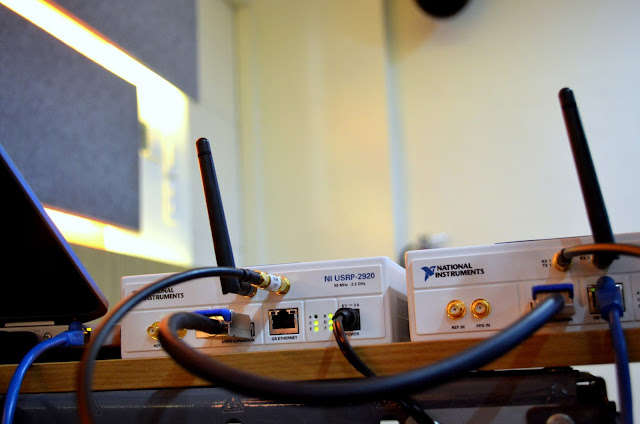 |
| NI’s Universal Software Radio Peripherals are software defined radios which can be used for massive MIMO testing. |
Fifth-Generation (5G) technology is inevitable. This was according to Dr. Ian C. Wong at the DOST-ASTI Software Defined Radio and 5G Research organized talk recently held at the University of the Philippines, Diliman Electrical and Electronics Engineering Institute (UP-EEEI).
Unlike past generation wireless technologies, 5G focuses on having a more advanced level fo communications. Instead of the person-to-person communication, this is about extending the communication and transmitting data and communication via person to person, machine to machine and machine to human.
“What's big about 5G is extending a machine-to-machine and human-to-machine world. Think about the smart factor, a self-driving car. So that's one thing that a 5G network wants to enable,” Dr. Wong said. “Fifth-generation technology changes the paradigm. It adds two main thing – enhanced mobile broadband and Internet of Things (IoT),” Dr. Wong said.
Currently, Dr. Wong is the Senior Group Manager of the Advanced Wireless Research Group of National Instruments where he heads the company's 3GPP and 802.11 wireless standards strategy and platforms for wireless system design, simulation, prototyping, and implementation.
5G operates in the frequency range from 3 GHz up to 30 to 40 GHz. When it comes to the bandwidth of such technology, it ranges from 200 MHz up to 800 MHz. Whereas Phase 1 is to be finished by December 2017.
“At NI, we've been working with wireless research for quite a while. We want to further wireless research to prototyping. We work with a lot of academic and industry institutions. It will really be a great opportunity for UP and DOST-ASTI to be part of this, of us, working together on this wireless research”, Dr. Wong said.
Two technologies that play major roles as 5G that leads to a milestone are the NI's Massive Multiple Input Multiple Output (MIMO) and Millimeter Wave (mm Wave).
“The mmWave is pushing up the frequency to really go up beyond the base stations sites. It goes from 24 all the way up to potentially 70, 80, or even 90 GHz, and use that for mobile communications. That's something totally new for mobile industries,” Dr. Wong explained.
5G technology is expected to be implemented by the year 2020.








0 Comments